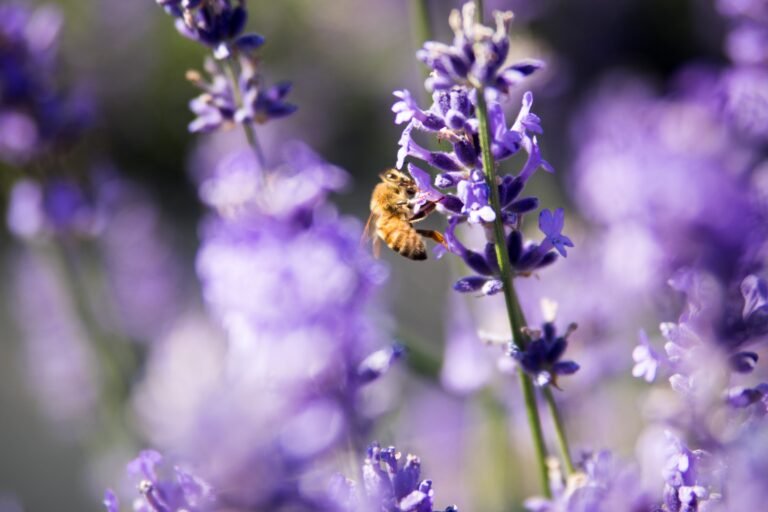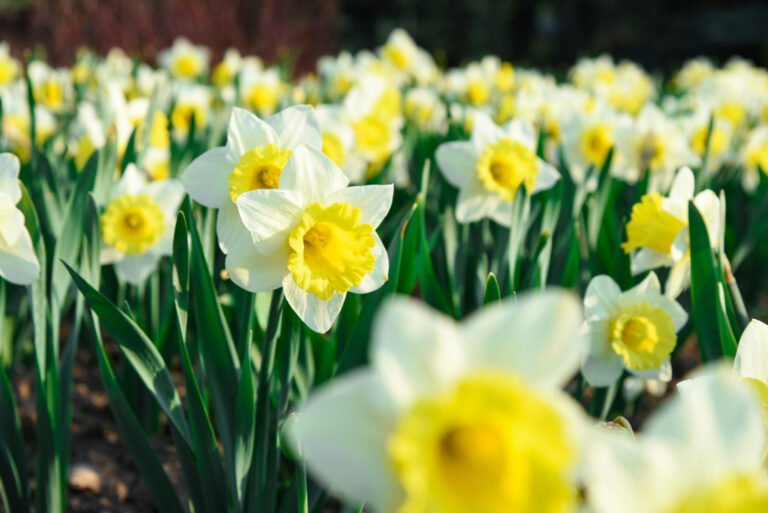In flowerbeds as well as in planters it is possible to create mixed compositions combining herbaceous ornamental plants of different heights, with inflorescences and foliage of variable chromatic tones or shades obtaining elegant and scenographic results. We can create harmonious ensembles by combining relaxing pastel shades where each color has the same weight without dominating the others or by grouping bright and saturated colors according to cohesive designs or schemes following personal imagination. To avoid obtaining uneven and visually disharmonious results, we need to take into consideration some aspects related to the plant species that we intend to use, in particular:
1. Vegetative vigor and plant habit
2. Height
3. Environmental conditions and growth needs
4. Color combinations
5. Flowering and seasonality
6. Insect friendly
7. Perfume
Vegetative vigor and plant habit
We try not to use plants that have different growth rates, to avoid that some of them may prevail over the others, compromising their growth and the final result. The best thing is to inform ourselves in advance about the habit of each individual species which may be prostrate, erect or climbing, setting up a combination design with a compact structure, for example by associating Asteriscus maritimus with Salvia farinacea and Lantana camara, or Alchemilla mollis with Astilbe chinensis, Bergenia cordifolia and Bergenia purpurescens.
Let us remember, during the transplant, to leave each specimen the right space to grow according to an appropriate planting density, helping to obtain a sense of fullness free from overcrowding. To initially make our garden take on a lusher appearance, we can also fill any empty spaces with annual plants until the perennials reach their final growth size.
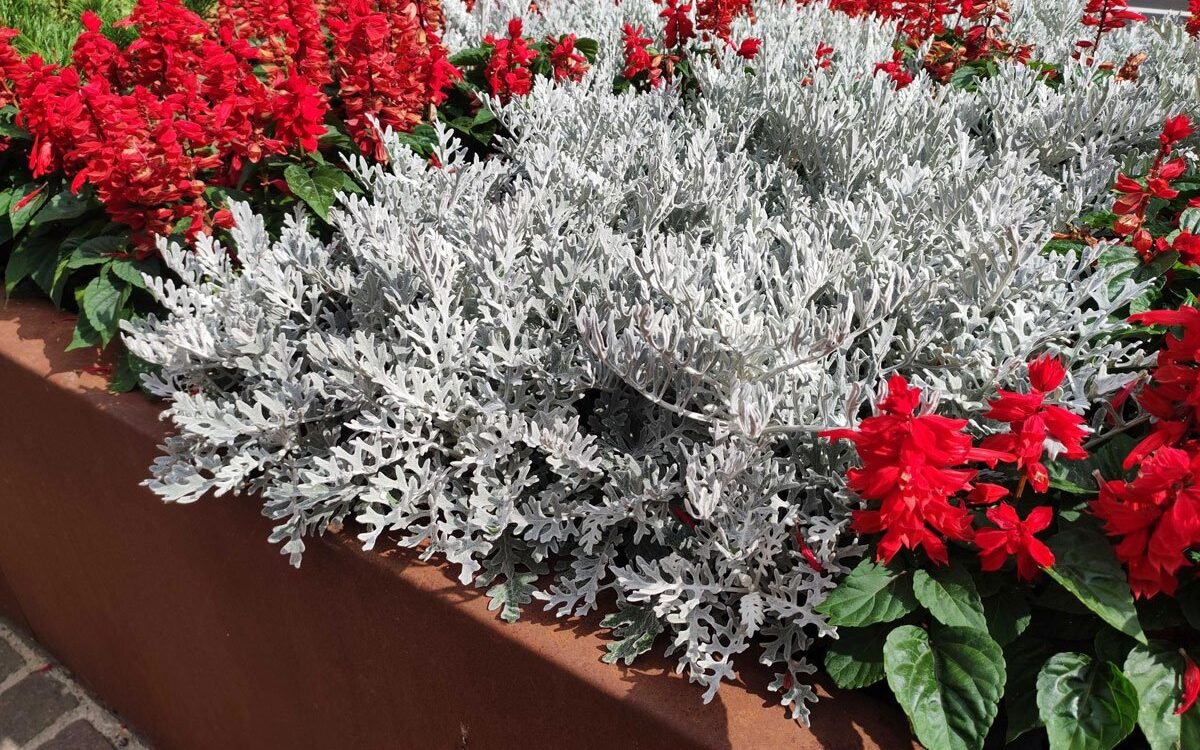
Height
Based on the final effect we want to achieve, we opt for combinations of species or varieties of different heights at maturity, arranging them according to rows or levels in order to obtain graceful and sinuous perspective views avoiding that plants are hidden by others. We can choose one or two species that can act as a colored focal point, thus attracting visual attention and balancing the whole, such as Alcea rosea, Digitalis the Echinacea.
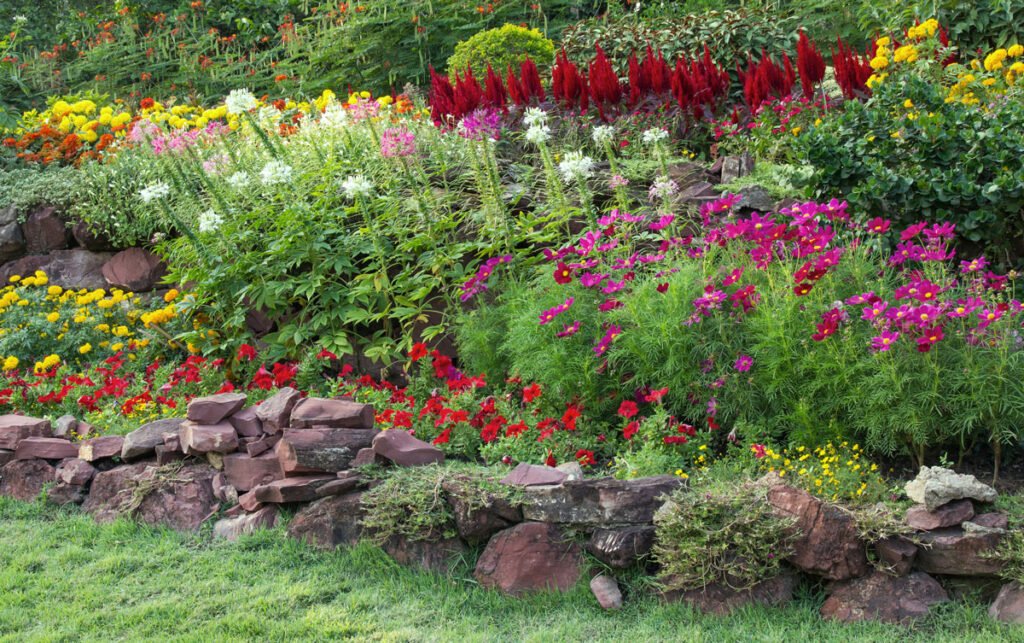
Environmental conditions and growth needs
Perfect matches include plants that enjoy the same growing conditions, as well as being in proportion to each other. We identify first of all those species that present the same requirements in terms of temperature and lighting since there are plants more suited to warm temperate climates and others for cool climates just as some express better flowering and growth if exposed to full sun while others require positions in partial shade sheltered from direct light. Water also plays an important role, in fact plants need adequate water supplies to grow but there are species that need abundant irrigation while others do not tolerate excess watering. Knowing the level of acidity of the soil or medium is another important information, since each species requires an optimal pH level, so we avoid combining those with different needs.
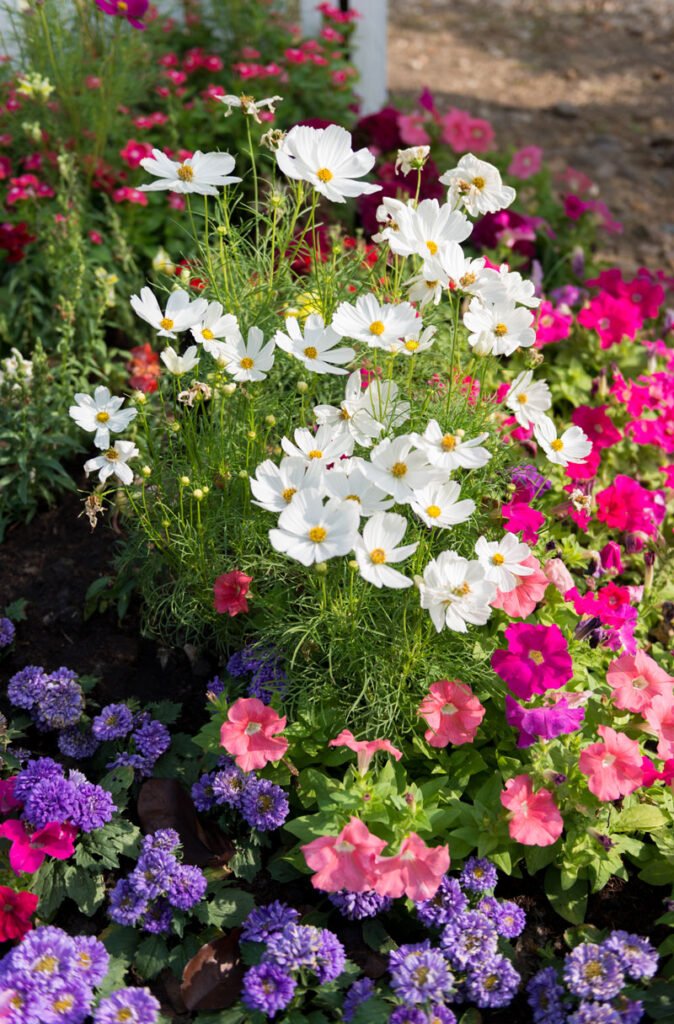
Color combinations
The color combinations can include shades of the same tone or an alternation also choosing among the different available varieties belonging to the same species. It is therefore possible to use plants with inflorescences of different shades of the same colour or with contrasting but visually harmonious nuances such as for example for Salvia farinacea Blu whose spike-shaped inflorescences with characteristic bluish tones combine well with the flowers of different varieties of Begonia semperflorens, Lobularia maritima and Tagetes patula; we can obtain elegant results by combining plants with coloured or variegated leaves such as the numerous hybrids of Solenostemon coleoides or Coleus blumei. Remarkable scenic effects are obtained with herbaceous plants with dense, single-coloured foliage which will provide a perfect support to highlight the colorful flowers of other ornamentals that will seem to float in the air with a well-balanced overall result as for Ipomea x hybrid whose leaves can act as a frame or background for species such as Impatiens x hybrid New Guinea and Lobularia x hybrid, or Heuchera americana with Cuphea hyssopifolia. The combination of the two is also fascinating. Senecio cineraria Silver with silvery leaves, perfect for highlighting the warm tones or pastel shades of the flowers of the varieties of Begonia x hybrida, Begonia semperflorens, Verbena x hybrid and Zinnia marylandica.
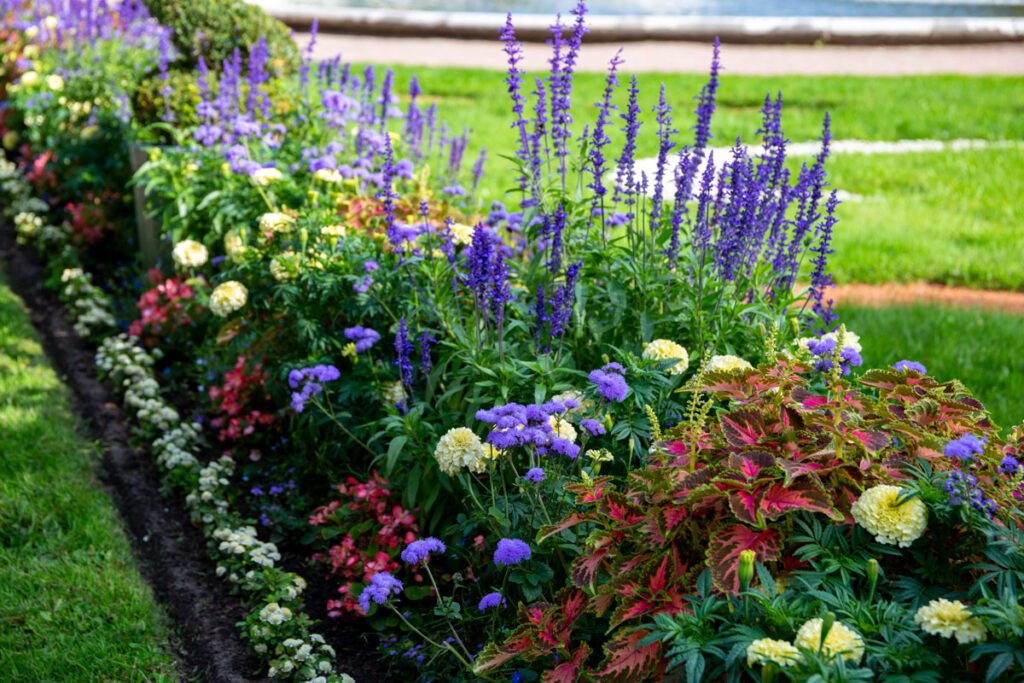
Flowering and seasonality
To reach continuity and persistence of colors create plant combinations that express a scalar and prolonged flowering over the months; with proper initial planning and a wide choice of species or varieties you can make your plants protagonists for all seasons. Make your flowerbed or border more interesting by combining plants with different flower shapes, for example the sinuous and elegant flower spikes of Lupinus nanus Russel contrast nicely with the compound umbrella-shaped inflorescences of Achillea tomentosa or as Antirrhinum majus whose raceme inflorescences harmonize well with those of Lobelia erinus. Bring life and color to your green spaces even during the autumn-winter seasons by using plants that express the maximum point of their flowering, early or late, when other ornamentals are fading, adding a bright touch with a warm-toned texture or creating depth and consistency with thin foliage. Gaura lindheimeri with its light and elegant inflorescences is fascinating, as well as the umbrella-shaped ones of some varieties of Pelargonium x hortorum that last until mid-autumn, or those of Fuchsia x hybrid which give an accent of color until late autumn.
Enchanting also the amber-red tones to which the leaves of Bergenia cordifolia turn during winter or the touch of elegance given by the winter blooms of Primula acaulis used in composition with Anemone coronaria, Ranunculus asiaticus and Viola cornuta.

Insect friendly
In mixed herbaceous compositions let’s not forget the importance of biodiversity by inserting species defined as “Insect friendly”, having flowers rich in nectar, well-liked by insects useful for pollination such as bees, bumblebees and butterflies. This is the case, for example, of Salvia splendens, to be used in composition with Petunia milliflora, Mecardonia x hybrid and Zinnia marylandica, or Rudbeckia hirta associable to Petunia grandiflora the Lobularia x hybrida.
Perfume
Let’s choose combinations of plants as fragrant as they are colorful following a uniformity of aroma that is pleasant to anyone who approaches. Let us be inebriated by the flowerhead of Bidens ferulifolium with a fruity, honey-like aroma, visually enhanced in combination with Calibrachoa the Scaevola aemula.
Combinations of ornamental herbaceous plants and shrubs have a significant decorative effect too and, if well designed, can create a floating and airy effect to the planting scheme even during the coldest seasons. A further article dedicated to these compositions will soon be available.


